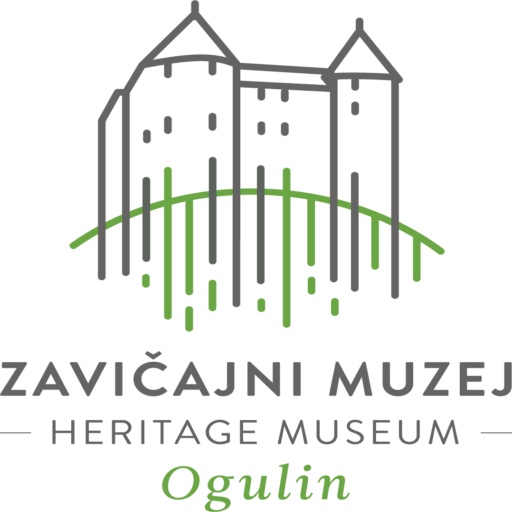ETHNOGRAPHIC COLLECTION
The Ethnographic Collection of the Ogulin Heritage Museum is set in the hallway and a large room on the first floor, and it is the most systematically collected exhibition of the Museum. For the most part, it comprises textile handicrafts and weaving tools, complemented with agricultural and other items related to the folk life and customs of Ogulin region.
The large number of daily tasks were dictated by the season. Household inventory in the rural area was homemade by women and men. Women engaged in homemade weaving, knitting and sewing, i.e. they produced textile handicrafts – especially in the winter. Men usually made both useful and decorative items from wood, standing the test of time. They spent each summer working in the field, hoping that the Heavens would answer their prayers for a better future.
With its numerous items, the collection presents that broad scope of folk life, urban and rural dichotomy and overall work continuity throughout the year, as well as the division of labour in Ogulin area, thus making a significant contribution to the preservation of local cultural heritage.
The experience of getting to know the history of Ogulin would be unthinkable without its traditional culture. It reflects its affiliation to the very edge of the Dinaric cultural area, but also the influence of the Pannonian, Adriatic and Alpine region. Traditional culture is the synthesis of the identity and collective consciousness of the local population, shaped by the geographic placement, natural resources and historical heritage. It is marked by uniqueness of both material and spiritual culture of everyday life, which is particularly reflected on folk costumes.
Women wore s costume consisting of three basic parts: a shirt (košuljica), a skirt with shoulder straps (kambrik) and a silk apron (zaslon). They also wore a kind of special woven belt (tkanica), socks and traditional leather shoes (opanci kapičari). Girls were particularly proud of their festive headpiece (podvezak), covered by a white woven headscarf (tumban) and a long red ribbon of equal length.
Woven pants (gaće) and a shirt tightened with a wide leather belt (čemer), a blue waistcoat (ječerma), socks, traditional leather shoes (opanci kapičari) and a characteristic red hat (crvenkapa) present the basic parts of male costumes, which are almost identical to the costumes of their neighbours from Lika.
